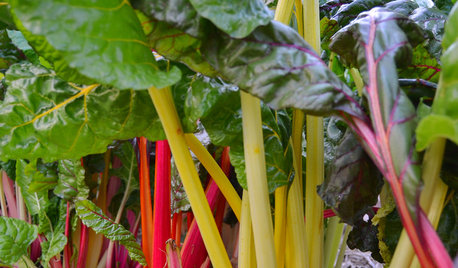Every Seedling I Grow is Floppy/Tiny Stem - Why?
tomacco
15 years ago
Related Stories

GARDENING GUIDESSeeds or Seedlings? How to Get Your Garden Started
Growing delicious herbs and vegetables starts with knowing your goals and when you want to plant
Full Story
GARDENING GUIDESSmall Carpenter Bees Are Looking for a Home in Your Plant Stems
Provide flowers and nesting sites in your garden for this beautiful, tiny, metallic blue wild bee — your plants will thank you
Full Story
EDIBLE GARDENSSummer Crops: How to Grow Tomatoes
Plant tomato seedlings in spring for one of the best tastes of summer, fresh from your backyard
Full Story
GARDENING GUIDESCool-Season Vegetables: How to Grow Chard
A year-round garden favorite with a colorful stem, Swiss chard comes into its own in early spring and in fall
Full Story
EDIBLE GARDENSSummer Crops: How to Grow Pumpkins
Start in spring to grow your own fall decorations and have plenty left for pies
Full Story
FARM YOUR YARDHow to Grow Vegetables in Containers
Get glorious vegetables and fruits on your patio with a pro’s guidance — including his personal recipe for potting mix
Full Story
GARDENING GUIDES8 Plants That Snobs Love to Hate — and You'll Love to Grow
Don't dismiss these common annuals, perennials and shrubs — there are reasons they've been popular for so long
Full Story
EDIBLE GARDENSHow to Grow Your Own Sweet Summer Crops
This guide will help any gardener get started on growing the freshest warm-season veggies and berries for summer
Full Story
SUMMER GARDENINGHow to Grow Basil
Bright color, quick growth and endless uses for cooking make this summer annual a winner in the garden or a pot
Full Story
EDIBLE GARDENSSummer Crops: How to Grow Squash
Almost foolproof and with cheerful flowers, squash comes in a wide range of varieties to plant in spring
Full Story





digdirt2
justine_butterbean
Related Professionals
Citrus Heights Landscape Architects & Landscape Designers · Forest Park Landscape Architects & Landscape Designers · Milwaukee Landscape Architects & Landscape Designers · Rancho Palos Verdes Landscape Architects & Landscape Designers · Summit Landscape Architects & Landscape Designers · Brockton Landscape Contractors · Fort Payne Landscape Contractors · Indianapolis Landscape Contractors · Lake Saint Louis Landscape Contractors · Peachtree City Landscape Contractors · Pine Hills Landscape Contractors · Tehachapi Landscape Contractors · Wallingford Landscape Contractors · Cincinnati Driveway Installation & Maintenance · Riverside Driveway Installation & MaintenancetomaccoOriginal Author
ninjabut
tomaccoOriginal Author
jean001
gumby_ct
tomaccoOriginal Author
dan_2007
tomaccoOriginal Author
MrClint
tomaccoOriginal Author
jimster
kayhh